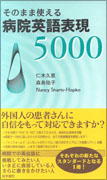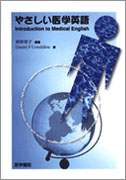日本人のための医学英語論文執筆ガイド [CD-ROM付]
Thinking in English でネイティブレベルのPaperを書く(How to Write an English Medical Paper that will be Published: A Guide for Japanese Doctors)
「日本人ばなれした英語論文」を書くための書。すぐに使えるCD-ROM 付
もっと見る
日本外科学会英文誌の英文校閲者として長年日本人の英語論文をチェックしてきたAmanda Tompson氏と、数々の英文誌の編集委員を歴任し、自らも多数の英語論文・著書を執筆してきた相川直樹氏の共著。原稿のプランから、構成要素ごとの執筆のポイント、編集者との手紙のやりとり、英文法と用語法まで、“Thinking in English”をキーワードに「日本人ばなれした英語論文」を書くための指南。付録として1000以上の例文を収載した検索機能充実のサンプルCD-ROM付。
| 著 | Amanda Tompson / 相川 直樹 |
|---|---|
| 発行 | 2008年04月判型:B5頁:232 |
| ISBN | 978-4-260-00476-3 |
| 定価 | 4,180円 (本体3,800円+税) |
- 販売終了
更新情報
-
更新情報はありません。
お気に入り商品に追加すると、この商品の更新情報や関連情報などをマイページでお知らせいたします。
- 序文
- 目次
- 書評
序文
開く
Introduction(Amanda Tompson)/序(相川 直樹)
Introduction
English has become the universal language in the world of learning. This is a fact of life we must accept; yet, to write a scientific paper in a language that is so difficult to master is often a daunting and overwhelming challenge, which many brilliant Japanese doctors do their utmost to avoid -- understandably. However, it is imperative that the rest of the world be informed about what is happening in medicine in Japan, in relation to research, clinical studies, opinions, new techniques, drug trials, and the specialist fields.
Naturally, the problems encountered by Europeans or Chinese trying to write in English are very different from those encountered by Japanese. Through years of experience in our respective areas of work, Dr. Aikawa and I have come to understand many of the problems specifically encountered by Japanese doctors trying to document or present their findings in English. We realized the great need for this book and decided that we could effectively help each other by writing it together.
Because you are Japanese, you should never imagine that your British, American, Canadian, and Australian colleagues receive preferential treatment from the editors of medical journals. Logical thinking and the clear organization of worthwhile subject matter are what the editors of medical journals are looking for -- and you may well have received a better grounding in grammar than some native speakers. Unfortunately, years of research are often finally judged by the presentation of a written report. It is a sad fact that a meticulous study can ultimately be let down by bad writing style, which may give the reviewer the impression of a lack of detail in the actual research.
It is very likely that you will do anything to avoid writing about your findings in English. You are not alone; many doctors and students of medicine, even the most successful, would rather get on with their next project than stop to report on their last one. However, every good research project, or interesting case experienced, must be documented in some form, because each new step forward is based on earlier findings. Thus, each step must be fully and clearly documented so that others can continue working to achieve advances and breakthroughs, such as those witnessed in the last half of the 20th century. Remember, good writing is difficult, even for experienced authors.
The purpose of this book is to give specific and concrete advice to Japanese physicians, surgeons, students of medicine, and other health workers, who want to improve the accuracy, clarity, and readability of their English medical writing. Basically, medical documentation should not be too different from other forms of writing. The medical paper, like any other, should tell a story and sentences must be short and simple, so that the documentation of your hard work can be easily understood. Always be aware that the reader does not yet know about anything you have found. Therefore, you must explain your findings simply and precisely so they will be understood easily. A good general rule to follow is: write only one thought per sentence.
Perhaps the first thing to bear in mind is that while many readers of your published manuscript will be native English speakers, almost as many readers will be non-native speakers, just like you. This reinforces the importance of clarity and simplicity to promote the ultimate aim of any medical document -- effective communication.
We believe this book will help you to prepare a manuscript that will be published, read, and understood.
Amanda Tompson, R.N.
March 2008
序
“Publish or perish”と言われるように,論文をpublishしないと,academiaでは生き残れない時代になりました.臨床医でも,自分の発見や考えを論文として残すことが求められています.
論文を日本語で書くことはそれほど大変ではありませんが,英語で書くとなると,辛い仕事になってしまいます.日本で生まれ育ち,日本語環境で毎日の生活をしているのですから当然です.
そこで,日本人が苦労しないで英語論文をすらすらと書けるようになるための本を作ってみようと思いたちました.私事で恐縮ですが,本書を作るようになった経緯をお話します.
私が慶應義塾の中学(中等部)のとき,Eastlakeという英会話の先生がおりました.日本に定住した米国人で,Eastlakeを「東湖」という苗字にするほどの日本通でしたが,授業中は一切日本語を使うことが許されませんでした.半世紀前の当時としては珍しい授業でした.そして,ご自身が書かれた“Thinking in English”という英語の教科書を使い,“Hear and speak English by thinking in English”の授業をしていました.
若いときから“Thinking in English”の習慣をつけると,英語の世界に入りやすいのだと思います.私は大学では,医師国家試験とECFMGを卒業後同時に受けるつもりで,日本語の教科書の他に内科は“Cecil and Loeb,”小児科は“Nelson,”外科は“Christopher”などを,スピードは多少遅いもののそれなりに読んで理解していました.当時は,日本語のよい教科書が少なかったこともあって,あまり苦にならなかったのだと思います.
教科書といえば,あるとき研修医が持っていたある米国の教科書の日本語版をみて,その読みにくさに驚きました.直訳のためでしょう.パソコンで使うWindowsやFileMakerの使用説明書も英語のUser’s guideを読むほうがよっぽど理解しやすい.“Lost in Translation”で事実や微妙なニュアンスが通じなくなってしまうのです.ですから,自分の言いたいことを正確かつ円滑に英語で書くには,言いたいことを英語で考えることが大事になるのです.これが,本書のcoreとなる “Thinking in English”です.
本書のもう一つの特徴は,“Clarity and Simplicity”を強調したことです.再び私事ですが,私は29歳でBostonに留学し,留学3年目にAmerican College of SurgeonsのSurgical Forumのpaperを書くことになりました.文字数が少ないので安心していたら,むしろ言いたいことを簡潔に少ない文字数の英語でまとめることの難しさに直面しました.そのときの指導者であったBurke教授は,私のdraftを半分ほど読んだだけで,“You are not writing a drama. Write a clear and simple scientific document”と言われました.日本語では簡潔明快に書けることも,英語となると回りくどくambiguousになってしまうのです.
帰国してからは,日本外科学会の英文誌(Surgery Todayの前身のJapanese Journal of Surgery)の編集幹事長として編集のお手伝いをする機会をいただきました.採択された原稿の英語や体裁の整備から,著者校正後の最終校正までが幹事たちの仕事でした.大文字と小文字(capitalization rules), colon と semicolonの使い分け,italicsにすべき語,米国式と英国式のproofreading signs (校正記号)やtypesetting rulesなど,外科医の仕事ではないと思いながらもお手伝いをしたお陰で多くを学びました.
この仕事を通して,当時から採択論文の英語のチェックを担当していたAmandaさんと多くのやりとりがありました.AmandaさんはAustraliaのnurseでしたが日本での居住歴もあり,日本人が間違いやすい英語を熟知していました.教授クラスの医師でも“the”や複数形,現在完了形などを正確に使えないことが多かったのです.中学レベルの英文法ですが,日本語から英語を作っていく過程で,日本語にない冠詞や複数形,現在完了などで間違ってしまうためです.Amandaさんはこれをどうしたらよいか,いろいろ考えていたようです.
このような二人の体験から,Amandaさんと話が合い,本書を作ることとなりました.“Thinking in English”の環境でclearな英語論文を書くことを強調し,“Thinking in English”の習慣をつけるために,解説は英語中心としました.そして,1,000以上の英語例文を提示して,例文の英語を読み理解して,それを模倣・応用した英文を作る方策を作りました.これは,英語を母国語とする人が生まれたときから親の英語を聞くことで,自然と親のまねをした英語をしゃべることができるようになるのと同様の環境を作るためです.
構想から上梓まで8年を要しました.Eastlake先生の“Thinking in English”の教えを受けて半世紀余り,そして,本書を作るきっかけとなった日本外科学会英文誌の編集の仕事は21年目で終えることとなり,その産物として本書を送り出すこととなりました.
本書が少しでも皆様のお役に立てれば有難く思います.
2008年3月
相川 直樹
慶應義塾大学教授
Introduction
English has become the universal language in the world of learning. This is a fact of life we must accept; yet, to write a scientific paper in a language that is so difficult to master is often a daunting and overwhelming challenge, which many brilliant Japanese doctors do their utmost to avoid -- understandably. However, it is imperative that the rest of the world be informed about what is happening in medicine in Japan, in relation to research, clinical studies, opinions, new techniques, drug trials, and the specialist fields.
Naturally, the problems encountered by Europeans or Chinese trying to write in English are very different from those encountered by Japanese. Through years of experience in our respective areas of work, Dr. Aikawa and I have come to understand many of the problems specifically encountered by Japanese doctors trying to document or present their findings in English. We realized the great need for this book and decided that we could effectively help each other by writing it together.
Because you are Japanese, you should never imagine that your British, American, Canadian, and Australian colleagues receive preferential treatment from the editors of medical journals. Logical thinking and the clear organization of worthwhile subject matter are what the editors of medical journals are looking for -- and you may well have received a better grounding in grammar than some native speakers. Unfortunately, years of research are often finally judged by the presentation of a written report. It is a sad fact that a meticulous study can ultimately be let down by bad writing style, which may give the reviewer the impression of a lack of detail in the actual research.
It is very likely that you will do anything to avoid writing about your findings in English. You are not alone; many doctors and students of medicine, even the most successful, would rather get on with their next project than stop to report on their last one. However, every good research project, or interesting case experienced, must be documented in some form, because each new step forward is based on earlier findings. Thus, each step must be fully and clearly documented so that others can continue working to achieve advances and breakthroughs, such as those witnessed in the last half of the 20th century. Remember, good writing is difficult, even for experienced authors.
The purpose of this book is to give specific and concrete advice to Japanese physicians, surgeons, students of medicine, and other health workers, who want to improve the accuracy, clarity, and readability of their English medical writing. Basically, medical documentation should not be too different from other forms of writing. The medical paper, like any other, should tell a story and sentences must be short and simple, so that the documentation of your hard work can be easily understood. Always be aware that the reader does not yet know about anything you have found. Therefore, you must explain your findings simply and precisely so they will be understood easily. A good general rule to follow is: write only one thought per sentence.
Perhaps the first thing to bear in mind is that while many readers of your published manuscript will be native English speakers, almost as many readers will be non-native speakers, just like you. This reinforces the importance of clarity and simplicity to promote the ultimate aim of any medical document -- effective communication.
We believe this book will help you to prepare a manuscript that will be published, read, and understood.
Amanda Tompson, R.N.
March 2008
序
“Publish or perish”と言われるように,論文をpublishしないと,academiaでは生き残れない時代になりました.臨床医でも,自分の発見や考えを論文として残すことが求められています.
論文を日本語で書くことはそれほど大変ではありませんが,英語で書くとなると,辛い仕事になってしまいます.日本で生まれ育ち,日本語環境で毎日の生活をしているのですから当然です.
そこで,日本人が苦労しないで英語論文をすらすらと書けるようになるための本を作ってみようと思いたちました.私事で恐縮ですが,本書を作るようになった経緯をお話します.
私が慶應義塾の中学(中等部)のとき,Eastlakeという英会話の先生がおりました.日本に定住した米国人で,Eastlakeを「東湖」という苗字にするほどの日本通でしたが,授業中は一切日本語を使うことが許されませんでした.半世紀前の当時としては珍しい授業でした.そして,ご自身が書かれた“Thinking in English”という英語の教科書を使い,“Hear and speak English by thinking in English”の授業をしていました.
若いときから“Thinking in English”の習慣をつけると,英語の世界に入りやすいのだと思います.私は大学では,医師国家試験とECFMGを卒業後同時に受けるつもりで,日本語の教科書の他に内科は“Cecil and Loeb,”小児科は“Nelson,”外科は“Christopher”などを,スピードは多少遅いもののそれなりに読んで理解していました.当時は,日本語のよい教科書が少なかったこともあって,あまり苦にならなかったのだと思います.
教科書といえば,あるとき研修医が持っていたある米国の教科書の日本語版をみて,その読みにくさに驚きました.直訳のためでしょう.パソコンで使うWindowsやFileMakerの使用説明書も英語のUser’s guideを読むほうがよっぽど理解しやすい.“Lost in Translation”で事実や微妙なニュアンスが通じなくなってしまうのです.ですから,自分の言いたいことを正確かつ円滑に英語で書くには,言いたいことを英語で考えることが大事になるのです.これが,本書のcoreとなる “Thinking in English”です.
本書のもう一つの特徴は,“Clarity and Simplicity”を強調したことです.再び私事ですが,私は29歳でBostonに留学し,留学3年目にAmerican College of SurgeonsのSurgical Forumのpaperを書くことになりました.文字数が少ないので安心していたら,むしろ言いたいことを簡潔に少ない文字数の英語でまとめることの難しさに直面しました.そのときの指導者であったBurke教授は,私のdraftを半分ほど読んだだけで,“You are not writing a drama. Write a clear and simple scientific document”と言われました.日本語では簡潔明快に書けることも,英語となると回りくどくambiguousになってしまうのです.
帰国してからは,日本外科学会の英文誌(Surgery Todayの前身のJapanese Journal of Surgery)の編集幹事長として編集のお手伝いをする機会をいただきました.採択された原稿の英語や体裁の整備から,著者校正後の最終校正までが幹事たちの仕事でした.大文字と小文字(capitalization rules), colon と semicolonの使い分け,italicsにすべき語,米国式と英国式のproofreading signs (校正記号)やtypesetting rulesなど,外科医の仕事ではないと思いながらもお手伝いをしたお陰で多くを学びました.
この仕事を通して,当時から採択論文の英語のチェックを担当していたAmandaさんと多くのやりとりがありました.AmandaさんはAustraliaのnurseでしたが日本での居住歴もあり,日本人が間違いやすい英語を熟知していました.教授クラスの医師でも“the”や複数形,現在完了形などを正確に使えないことが多かったのです.中学レベルの英文法ですが,日本語から英語を作っていく過程で,日本語にない冠詞や複数形,現在完了などで間違ってしまうためです.Amandaさんはこれをどうしたらよいか,いろいろ考えていたようです.
このような二人の体験から,Amandaさんと話が合い,本書を作ることとなりました.“Thinking in English”の環境でclearな英語論文を書くことを強調し,“Thinking in English”の習慣をつけるために,解説は英語中心としました.そして,1,000以上の英語例文を提示して,例文の英語を読み理解して,それを模倣・応用した英文を作る方策を作りました.これは,英語を母国語とする人が生まれたときから親の英語を聞くことで,自然と親のまねをした英語をしゃべることができるようになるのと同様の環境を作るためです.
構想から上梓まで8年を要しました.Eastlake先生の“Thinking in English”の教えを受けて半世紀余り,そして,本書を作るきっかけとなった日本外科学会英文誌の編集の仕事は21年目で終えることとなり,その産物として本書を送り出すこととなりました.
本書が少しでも皆様のお役に立てれば有難く思います.
2008年3月
相川 直樹
慶應義塾大学教授
目次
開く
Introduction
序
本書の使い方
Part I Planning and Writing Your Manuscript
原稿のプランと執筆
1:Preparation
原稿の準備
2:Organization of Your Manuscript
原稿の構築
3:The Title ― The Most Important Word Construction in Your Whole Paper
タイトル ─ 論文中でもっとも大事な用語法が求められる
4:The Introduction ― Convincing Readers of the Importance of Your Study
諸言 ─ 研究の重要性について読者を説得
5:The Materials and Methods ― The Easiest Part of Your Paper to Write
対象と方法 ─ 論文中でもっとも書きやすい部分
6:The Results ― The “Core” of Your Paper
結果 ─ 論文の中核(Core)
7:Figures and Tables ― “A Picture is Worth a Thousand Words”
図表 ─ 写真は千語に値する
8:The Discussion and Conclusions
― Interpreting and Explaining the Meaning of Your Data
考察と結論 ─ 自分のデータの意味を考察して説明する
9:The Abstract ― This is All that Most People will Read
要旨 ─ ほとんどの人は要旨を読む
10:Acknowledgments
謝辞
11:References
文献
12:The Case Report
症例報告
13:Special Submissions
特別な寄稿
14:The Review Article
レビュー論文(総説・解説)
15:Writing a Covering Letter and Responding to Editors’ and Peer Reviewers’ Comments
投稿時の編集長への書簡と,編集長や査読者への対応
Part II Grammar and Usage ― Clarity is the Key to Good Medical English
英文法と用語法 ─ 「明快さ」がよい医学英語の秘訣
16:Choosing the Right Word
適切なwordを選ぶ
17:Grammar ― Some Useful Advice
英文法 ─ 役立つアドバイス
18:Punctuation ― The “Road Signs” of Your Paper
句読点 ─ 論文の「道路標識」
19:100 Examples of Common Mistakes in Sentences, with Explanations and Suggested Alternatives
日本人に共通のMistakes ─ 100の文例と解説
Appendix 付録
1:Words and Expressions to Avoid
避けるべき語句
2:Commonly Misspelled Words
スペルを誤りやすい語
3:Proofreading Signs
校正記号 ─ 校正(proofreading)でトラブルを避けるために
4:Useful Software and Websites
論文執筆に役立つソフトウェアとウェブサイト
5:Impact Factor
インパクトファクター
Bibliography 参考文献
Some “Handy Hints” for Clear Writing
Index 索引
序
本書の使い方
Part I Planning and Writing Your Manuscript
原稿のプランと執筆
1:Preparation
原稿の準備
2:Organization of Your Manuscript
原稿の構築
3:The Title ― The Most Important Word Construction in Your Whole Paper
タイトル ─ 論文中でもっとも大事な用語法が求められる
4:The Introduction ― Convincing Readers of the Importance of Your Study
諸言 ─ 研究の重要性について読者を説得
5:The Materials and Methods ― The Easiest Part of Your Paper to Write
対象と方法 ─ 論文中でもっとも書きやすい部分
6:The Results ― The “Core” of Your Paper
結果 ─ 論文の中核(Core)
7:Figures and Tables ― “A Picture is Worth a Thousand Words”
図表 ─ 写真は千語に値する
8:The Discussion and Conclusions
― Interpreting and Explaining the Meaning of Your Data
考察と結論 ─ 自分のデータの意味を考察して説明する
9:The Abstract ― This is All that Most People will Read
要旨 ─ ほとんどの人は要旨を読む
10:Acknowledgments
謝辞
11:References
文献
12:The Case Report
症例報告
13:Special Submissions
特別な寄稿
14:The Review Article
レビュー論文(総説・解説)
15:Writing a Covering Letter and Responding to Editors’ and Peer Reviewers’ Comments
投稿時の編集長への書簡と,編集長や査読者への対応
Part II Grammar and Usage ― Clarity is the Key to Good Medical English
英文法と用語法 ─ 「明快さ」がよい医学英語の秘訣
16:Choosing the Right Word
適切なwordを選ぶ
17:Grammar ― Some Useful Advice
英文法 ─ 役立つアドバイス
18:Punctuation ― The “Road Signs” of Your Paper
句読点 ─ 論文の「道路標識」
19:100 Examples of Common Mistakes in Sentences, with Explanations and Suggested Alternatives
日本人に共通のMistakes ─ 100の文例と解説
Appendix 付録
1:Words and Expressions to Avoid
避けるべき語句
2:Commonly Misspelled Words
スペルを誤りやすい語
3:Proofreading Signs
校正記号 ─ 校正(proofreading)でトラブルを避けるために
4:Useful Software and Websites
論文執筆に役立つソフトウェアとウェブサイト
5:Impact Factor
インパクトファクター
Bibliography 参考文献
Some “Handy Hints” for Clear Writing
Index 索引
書評
開く
これから論文を書く人に ぜひとも読んでもらいたい書
書評者: 岩田 誠 (東女医大名誉教授・神経内科学)
畏友相川教授が書かれた本ということに大きな期待を抱きつつ,手元に届いた本書を早速読み始めた。親切なことに,本書の冒頭には,「本書の使い方」という章があり,そこには「使用法の実際」という読み方のガイドが書かれている。そこにある「一般的な使い方」というほうの読み方の指示に従って,ざっと読んでみることにした。
このガイドによれば,まずは英文の方は読まずに日本語の部分だけを読むこと,となっており,そうすれば45分間で読了するはずなのだが,ガイドの中では,本書を読む上での禁忌としている英文の部分までも熟読してしまったために,一応目を通すのには結構な時間がかかってしまった。それというのも,英文の部分も,読み飛ばすにはあまりにも面白かったからである。特に,Part II に紹介されている英文の文章は,大変面白い。ここには,日本人の間違いやすい表現で書かれた文例が100件掲載され,その間違いの解説と,修正されたより正しい文章が示されている。間違いのある文章の中には,一見どこが不適切なのか判明しがたいものも少なくないのだが,修正された文章とその解説を読むと,ははーなるほどと納得したり,思わず苦笑してしまったりする。やっぱり自分は日本人であることを改めて認識すると同時に,言葉の勉強の面白さに引き込まれてしまうのである。
順番が前後してしまったが,もちろんPart I の内容は極めて重要である。ここには,単に英文の書き方といった瑣末なことだけでなく,論文というものを作成するための基本的な注意が,こと細かに述べられており,まさに本書は論文執筆の作法の書なのだということが分かる。特に,原稿の準備やその構築に関する基本的な注意事項や,タイトルの書き方など,いかなる言語の論文の場合であろうとも,これから論文を書く人にはぜひとも読んでおいてもらいたいことが,大変親切に書かれている。また,投稿時の編集長への書簡,すなわちCovering Letterの意味や,その書き方に関する注意も,論文を投稿する人にとっては大変有用な情報であろう。
今はもう30年以上前のことになるが,私が米国留学中に師事した故Harry M. Zimmerman先生は,患者のことをcaseと表現したり,患者の性についてmale,femaleと表現したりすることを固く禁じられ,人間を対象としていることを忘れないようにと絶えず私たちを諌められた。その恩師が繰り返し言っておられたのと全く同じ注意が本書に書かれていることを発見し,私は大変嬉しく思った次第である。そんなことから,若い医師や医学研究者たちに,私は共感を持って本書を薦めたいと思う。
書評者: 岩田 誠 (東女医大名誉教授・神経内科学)
畏友相川教授が書かれた本ということに大きな期待を抱きつつ,手元に届いた本書を早速読み始めた。親切なことに,本書の冒頭には,「本書の使い方」という章があり,そこには「使用法の実際」という読み方のガイドが書かれている。そこにある「一般的な使い方」というほうの読み方の指示に従って,ざっと読んでみることにした。
このガイドによれば,まずは英文の方は読まずに日本語の部分だけを読むこと,となっており,そうすれば45分間で読了するはずなのだが,ガイドの中では,本書を読む上での禁忌としている英文の部分までも熟読してしまったために,一応目を通すのには結構な時間がかかってしまった。それというのも,英文の部分も,読み飛ばすにはあまりにも面白かったからである。特に,Part II に紹介されている英文の文章は,大変面白い。ここには,日本人の間違いやすい表現で書かれた文例が100件掲載され,その間違いの解説と,修正されたより正しい文章が示されている。間違いのある文章の中には,一見どこが不適切なのか判明しがたいものも少なくないのだが,修正された文章とその解説を読むと,ははーなるほどと納得したり,思わず苦笑してしまったりする。やっぱり自分は日本人であることを改めて認識すると同時に,言葉の勉強の面白さに引き込まれてしまうのである。
順番が前後してしまったが,もちろんPart I の内容は極めて重要である。ここには,単に英文の書き方といった瑣末なことだけでなく,論文というものを作成するための基本的な注意が,こと細かに述べられており,まさに本書は論文執筆の作法の書なのだということが分かる。特に,原稿の準備やその構築に関する基本的な注意事項や,タイトルの書き方など,いかなる言語の論文の場合であろうとも,これから論文を書く人にはぜひとも読んでおいてもらいたいことが,大変親切に書かれている。また,投稿時の編集長への書簡,すなわちCovering Letterの意味や,その書き方に関する注意も,論文を投稿する人にとっては大変有用な情報であろう。
今はもう30年以上前のことになるが,私が米国留学中に師事した故Harry M. Zimmerman先生は,患者のことをcaseと表現したり,患者の性についてmale,femaleと表現したりすることを固く禁じられ,人間を対象としていることを忘れないようにと絶えず私たちを諌められた。その恩師が繰り返し言っておられたのと全く同じ注意が本書に書かれていることを発見し,私は大変嬉しく思った次第である。そんなことから,若い医師や医学研究者たちに,私は共感を持って本書を薦めたいと思う。
更新情報
-
更新情報はありません。
お気に入り商品に追加すると、この商品の更新情報や関連情報などをマイページでお知らせいたします。
![日本人のための医学英語論文執筆ガイド [CD-ROM付]](https://www.igaku-shoin.co.jp/application/files/5316/0457/5235/4695.jpg)

